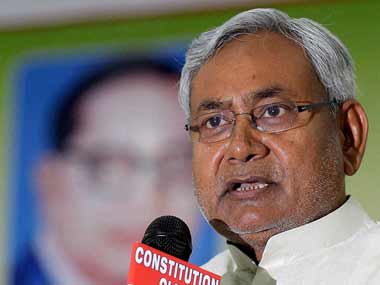The best Bihar narrative can be found in Hindi novels of master story-teller Phaneeshwar Nath Renu. His two famous novels “Parti Parikatha and Mailaa Aanchal” contain stories of numerous social mutinies that churn society underneath with deceptive surface-level calm. The Kosi region that comprises Purnea, Saharsa, Supaul, Madhepura and Bhagalpur, is literally a forsaken land frequently visited by natural and man-made calamities. Renu’s stories and plots used to be set either in the pre-independence era (1940s) or post-independence (60s & 70s) wherein the intermediary castes were still learning to assert themselves under the Congress umbrella. The social acrimony of later decades (80s) had still not quite acquired the nature of massacres that characterised Bihar’s political order then. But Bihar changed radically over the next two and half decades. The 1990’s that saw the ascendancy of Lalu Prasad Yadav under the banner of VP Singh’s Janata Dal. He was seen as an effective antidote to the dominance of the oppressive upper castes. Lalu’s support base comprised social underdogs who carried him through in 1995 and 2000 elections. He became a darling of a section of intelligentsia after arresting BJP leader LK Advani at Samastipur to bring his Rath Yatra to a grinding halt. [caption id=“attachment_2427630” align=“alignleft” width=“380”]  Bihar Chief Minister Nitish Kumar. PTI[/caption] Lalu altered the political grammar of the state, invented new idioms and vocabulary that kept the caste-ridden and fractious Bihari society always on the precipice. The 1990-2000 decade saw a spate of caste killings, each tragedy yielding rich political dividends to Lalu Prasad. The combination of Dalits, OBCs and Muslims made for the biggest social chunk and it always tilted in his favour. With the radical left such as MCC, People’s War and other Naxal groups gaining a toehold in Gaya, Muzaffarpur, Arah and Patna, the radicalisation of society hardened. Upper castes and landlords floated their own private armies such as Ranveer Sena, Kunwar Sena ostensibly to protect their honour and unleashed terror against the hapless. The killings of Bhumihars in Bara of Gaya and retaliation against Dalits in Bathani Tola in Jehanabad were just a symptom of the malaise that afflicted Bihar then. In 2005 Nitish Kumar’s emergence as the face of the BJP-JD (U) combine marked a definite deviation from a political order which promoted social acrimony at the expense of people’s welfare and development. In the 15-year regime of Lalu and his wife Rabri Devi, governance was reduced to a farce as the state’s annual plan always fell far short of its target. Nitish Kumar’s experience as an able and no-nonsense administrator earned him laurels even from former Prime Minister Atal Behari Vajpayee. Since Kumar belonged to Kurmi caste (OBCs), he won over a considerable section of non-Yadav OBCs also to his fold. Like Lalu, Nitish Kumar too changed the political grammar and but only to give currency to a political vocabulary that struck a note of conciliation. Unlike Lalu he resurrected the state and institutions to restore people’s confidence in the government. Just after his thumping victory in 2010, Kumar aptly described his agenda as “governance, governance and governance”. The absenteeism of teachers and doctors from schools and government-run hospitals was curbed. In words of Shaibal Gupta, a noted scholar on Bihar, Nitish Kumar managed to restore people’s faith in the state. In the process, he forged a potent “coalition of extremes” that combined social elites and underdogs. “This coalition of extreme was a powerful counterbalance to Lalu’s Muslim-Yadav combine,” said Gupta. Even officials who worked closely with Kumar admit that the first five-year rule of Nitish Kumar saw a maniac frenzy to push development agenda. “There was so much to do and so little time,” Nitish Kumar used to say. A group of dedicated IAS officials was chosen and asked to work and monitor development projects round the clock. The state witnessed construction of a record number of bridges and state highways in those five years that saw for the first time growth rate surpassing even Gujarat. In terms of social indices, Bihar had shown considerable improvement with literacy rate and primary health. A new narrative of optimism and hope was weaved around Bihar which could now tout its own model of development. This prompted even RSS chief Mohan Bhagwat to say that the Bihar turnaround was a greater feat than the success story of Gujarat. Right up till 2011, the Nitish Kumar story was flawless. He managed to build political capital that was in no way inferior to that of his counterpart and bête noire in Gujarat, Narendra Modi. Kumar did not allow Modi to campaign in Bihar for the assembly 2010 election on the pretext that his presence would consolidate Muslim votes for Lalu Prasad. Sitting in this impregnable fort, Nitish Kumar seemed well and truly set for a long innings. Only he could breach his fortress. And he did. How exactly did he do it? We’ll come to it when the Bihar Story resumes tomorrow.
The best Bihar narrative can be found in Hindi novels of master story-teller Phaneeshwar Nath Renu. His two famous novels “Parti Parikatha and Mailaa Aanchal” contain stories of numerous social mutinies that churn society underneath with deceptive surface-level calm.
Advertisement
End of Article


)

)
)
)
)
)
)
)
)



